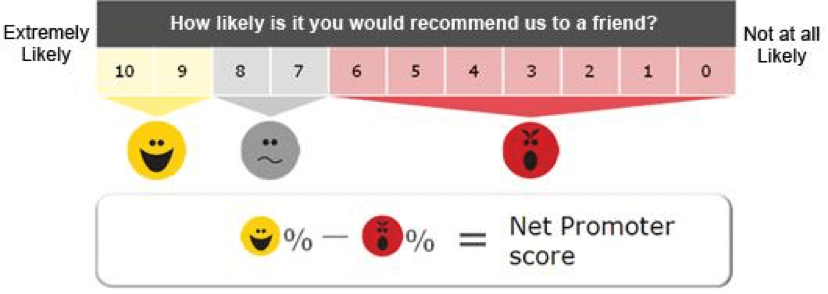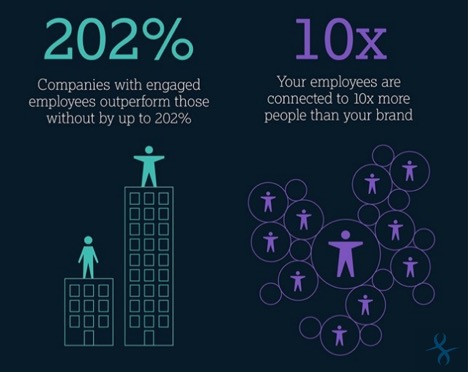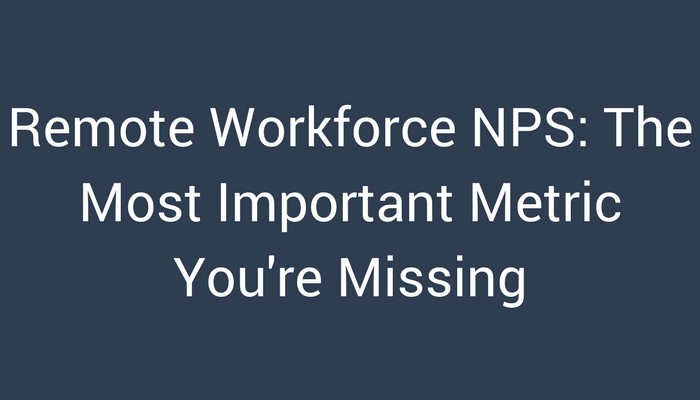There are so many different metrics and acronyms, you’re forgiven if you don’t recognize this one.
You must have noticed, though, how much the way people work is changing. As businesses struggle to keep up with customer demands and technology advances, you must rely more than ever on your key differentiator: innovative, committed, and customer-oriented people.
NPS may be the one metric you’ve never heard of that meets the speed and flexibility of the modern workforce. You’re going to be so happy you read this blog post.
What is NPS?
Net Promoter Score® usually measures the loyalty of customers in relation to a specific brand. It was introduced by Frederick Reichheld in the Harvard Business Review’s December 2003 issue. As suspiciously simple as it seems, his research with Bain and Satmetrix revealed a single question to customers was frequently the most powerful predictor of profitable growth:
“How likely is it that you would recommend [brand name] to a friend?”
We all know by now that customer experience depends on employee experience, so it makes total sense that companies NPS as a measure for employee loyalty and engagement.
By the time Reichheld’s book published in 2011, Apple and JetBlue, innovators that they are, were already using employee Net Promoter Score (eNPS). They pioneered a new movement that serves employee loyalty with the same enthusiasm as customer loyalty.

How do you measure employee NPS?
Take another pioneer, Rackspace, for example. They asked their employees after their first 90 days and on every anniversary:
“On a scale of zero to ten, how likely is it you would recommend this company as a place to work?”
Reichheld’s website shows how responses indicate three categories of employees:
 | Promoters (9-10) are so committed to your company, they want their friends to join them. |
 | Passives (7-8) are more indifferent than you may realize. |
 | Detractors (0-6) are dissatisfied. They may be speaking negatively about your company and actively looking to leave. |

The Net Promoter Score then is the percentage of employees who are promoters less the percentage of detractors. This formula accounts for the central tendency bias and focuses action on the two priorities: reduce issues and raise excellence.
The simplicity of one clear question and one meaningful score can revolutionize complex, delayed annual employee surveys the way it has cumbersome employee satisfaction surveys.
For Rackspace, eNPS provided a steady stream of feedback to identify and prioritize issues early. When low scores correlated with recruitment process feedback, they focused improvements and now employees are more likely to refer friends.
The cool thing about NPS is that it’s open-source, so you’re free to use it and adapt it to suit your unique organization. Enterprise, for instance, uses a five-point scale. You may choose to survey every month or more. Some companies ask a follow-up question on the reasons behind the scores or how the company can help the employee achieve or maintain a 10.
Why should you care about your employee’s loyalty and engagement?
Companies have known the importance of employee engagement to the bottom line for decades: engaged employees are more productive, cost-effective, innovative, and of course loyal. Retention alone can save up to twice annual salary.
Gallup reports only 13% of employees worldwide and approximately 30% in the US are engaged. It’s rare but it’s worth pursuing. Those companies with engaged workforces outperformed their peers by 147% in earnings per share.
Engagement remains a hot topic in 2023 because people are more mobile and have greater expectations of meaning and growth in the workplace. 87% of employers surveyed by Future Workplace and Kronos said retention is a critical priority they are addressing with employee experience improvements like flexible work arrangements.
eNPS allows you to easily benchmark engagement across different segments, over time, and relative to competitors. Rather than complex survey data stuck in lengthy analysis at corporate headquarters, this is a metric designed for frontline teams to prioritize issues and act.
The cherry on top: it links employee NPS with customer NPS, connecting employee engagement directly with business objectives.

What does this have to do with remote workers?
So far, for most HR execs, the above is not knocking you off your ergonomic chairs.
Enter the Gig Economy.
Two leading economists showed an increase of nearly 50% over the past decade in “alternative work arrangements.” McKinsey & Company reports 20-30% of the workforce in the US and Europe work to some degree in the gig economy and that is expected to keep growing.
Independent/contingent/gig workers include part-time carpenters, semi-retired consultants, and voiceover artists from the other side of the world. They are often more specialized, more agile, more results-oriented, and more economical.
Over 36% of the global workforce, that’s over 1.2 billion employees, considered mobile employees. GlobalWorkplaceAnalytics.com calculates American businesses save $11,000 per remote worker per year and they are just as productive as regular employees with technology available these days.

Regulations are still catching up to determine benefits and protections, as well as safety and taxation, for remote and contingent workers. Organizations likewise must prepare for a future with more of these alternative work arrangements.
The big challenge is engaging remote workers. The principles and benefits of employee engagement apply to people with any employment contract, but physical distance can impede connection with company culture and values.
So, if NPS was important to measure before, it becomes critical as the remote and contingent workforce grows.
How can you engage a remote workforce?
First, if you’re not measuring employee NPS – start. With even less opportunity for check-ins “in real life,” a regular, simple, meaningful survey is an even greater priority.
New problems require new solutions.
With most employees owning smartphones, they are used to connecting with peers instantly and voicing their opinions to brands directly, all from the toilet seat.
Lucky for employers of any size, there’s an app for that.
There is in fact a customizable, branded app that allows you to easily send all employees the NPS rating question and an open-ended question for elaboration.

And just to make it extra actionable, you can review responses in real-time; segment by location and function; and, export to Excel for analysis.
Surveys through your Connecteam employee app are simple and direct – a perfect fit with NPS.
Oh, and you can also use it for punch clocks, training, chats and all that. eNPS is seamlessly integrated with employee communications no matter when, where, or how your employees work.
Of course, Frederick Reichheld will be the first to tell you NPS only works when you “close the loop.” Whether it’s a direct conversation to address concerns or an organization-wide change, do something. The worst thing you can do is request feedback and then ignore it.
Engaging your remote workforce means you need to communicate with them in a more flexible way than you would your traditional workforce. Working remotely is all about speed and flexibility – both from necessity and preference – so you need to be able to adjust and move with your employees.
That’s why employee apps make for the perfect solution to engaging your remote workers.

